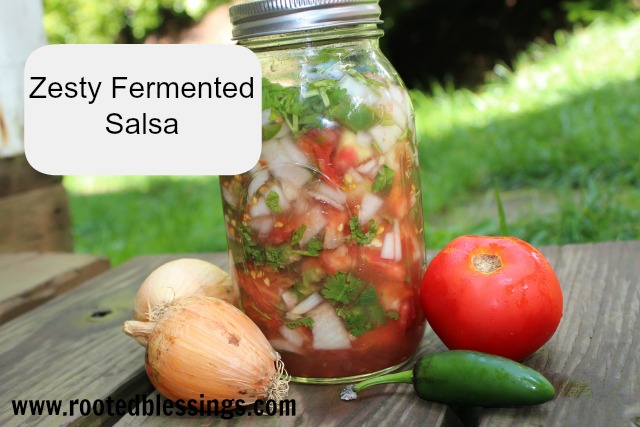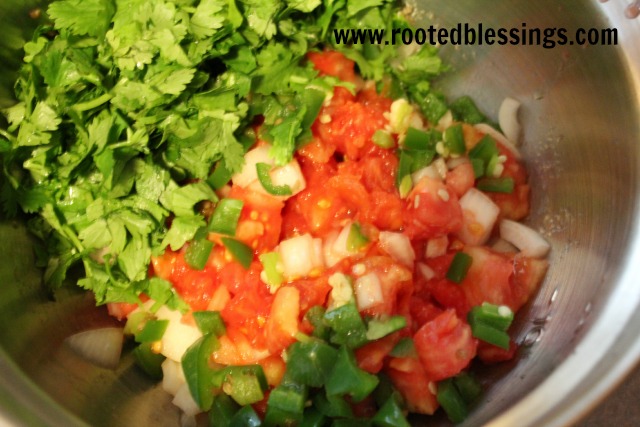Food allergies, asthma, ADHD, seasonal allergies, perpetual nose drips, fatigue, chronic diarrhea, autoimmune disease, chronic constipation, and many other health struggles can often begin as an imbalance of gut flora. It can be helpful to take a good heavy-duty probiotic, but much of our culture has lost the ability to ferment foods in order to naturally restore gut health with natures own probiotic.
It can be helpful to include a tablespoon or two of fermented foods with each meal if you aren’t sensitive to the food in order to restore the health of your gut. Fermented foods are fairly easy to make and can add lots of flavor and zest to your meals each day. Plus, fermented foods are a way to preserve summer’s incredible bounty.
This tasty and zesty fermented salsa recipe can add a kick to any Mexican meal or can be tasty to eat with organic tortilla chips. It may add the perfect flavorful kick to the meal that you have been looking for.
Zesty Fermented Salsa
Adapted from Nourishing Traditions
Ingredients:
4 medium tomatoes
1 medium onion
2 jalapeno peppers
1 bunch of cilantro
Juice of 2 lemons
1 tablespoon unrefined Sea Salt
4 tablespoons whey
1/4 cup filtered water
Directions:
Chop up all your veggies, mix and place in quart size wide mouth mason jar. Press down with a wooden pounder. Add more water if necessary to cover the vegetables. It is important that the vegetables sit at least one inch below the mouth of the jar. Cover tightly and leave at room temperature for 4 -6 days. Taste the veggies as the days progress and put them in cold storage once it is a taste to your liking. Veggies continue to ferment in the fridge, but do so much more slowly. So, the taste will change as it keeps in the fridge.
As with any food or fermented recipe don’t consume anything that has an unpleasant smell or taste.
This post is linked to Fight Back Friday and Small Footprint Friday.
 Follow
Follow










Great recipe! I’m kinda wimpy with spice, so I usually skip the peppers and add some garlic. Visiting from Fight Back Friday and looking forward to reading more on your site…
Hi, I would really like to try this recipe, but I have a question. Is it necessary to add whey? I apologize for being a newbie, but we are allergic to milk products in my family. Can I get away with not adding the whey? Or is that vital for fermentation (totally new to fermentation but wanting to start)
Thanks so much!
Hi Suzanne. Yes, the whey does help with the fermentation process, but I wouldn’t recommend it if you have milk allergies in your family. You can also add an extra tablespoon of salt, but it will give the recipe a slightly different taste. Here is a great article from Cultures for Health about substituting whey, it gives a few other options as well http://www.culturesforhealth.com/compare-salt-whey-starter-culture-ferment-vegetables-fruits-condiments
This looks yummy! I have milk kefir. Can I use whey from that? If so how do you get the whey?
Yes! You can use whey from your milk kefir. You can have it sit on your counter for a few days and the whey will separate from the rest of the milk. Just use the clearish yellowy looking stuff. 🙂
How long does this keep for? I’m new to fermenting. I’m curious if it helps preserve food for long periods.
It keeps indefinitely. Fermenting is an age old method of keeping food for a long time. At times during the process the top may get a white film due to it being exposed to air and not properly fermenting. It is fine. Just don’t ever eat anything fermented that smells unpleasant or contains any black mold.